You are currently browsing the tag archive for the ‘Purandara dasa’ tag.
The name ‘Ranga’ may bring several things to your mind. At least it does to my mind! If you are a fan of Dr Rajkumar, you’d definitely know this song from one of his movies in the 1980s.
Although the movie is from the 1980s, the song predates it by a few centuries. This is a composition of Purandara dasa, and the tune used in the film pretty much sticks to how it has been sung traditionally, in shankarabharana raaga.
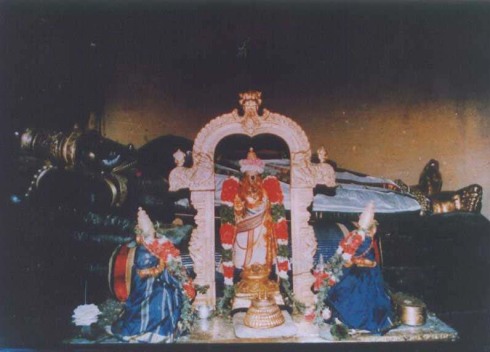
Ranganatha @Srirangam
If you are a history buff, I bet you’d think of Sriranga pattana – The capital of Tippu Sultan. The town takes its name from the the temple of the presiding deity Ranganatha. Sriranga Pattana is an island in the river Kaveri. In fact there are three such places where the river branches off into two parts creating a large island. There is a temple dedicated to Ranganatha at each of these places – Sriranga Pattana and Shivana Samudra in Karnataka, and Srirangam in Tamil Nadu.
In all these three places, Ranganatha is depicted in a reclining position on his serpent bed, the seven- hooded Adishesha.

Ranganatha Temple, Mavinakere
However Sriranga Pattana or Srirangam is not the first place that comes to my mind when I hear that name Ranga, but instead it takes me to memories of Mavina Kere. Perched atop a hill in southern Karnataka, a little temple houses the deity well known to locals as “Mavina Kere Ranga” or the “Ranga @Mavina Kere”. The view from the top of the hill is very nice, showing the countryside.

Steps up the hill
I’ve visited Mavina Kere several times. In fact one of my early memories is of a trip to Mavinakere which I did not make! I was probably 4 years old then. I was really looking forward to going to the hill with all my cousins, during one of the yearly summer gatherings. But as luck would have it, I did not wake up in time. Rather than trying to wake me up, the party had left me home, with a few others who could not climb the hill for health reasons!
At every visit, I have enjoyed climbing the hill at Mavinakere. During my latest visit a few weeks ago, I was pleasantly surprised to see a road to the top. However, not to miss the joy of climbing the hill, I climbed down and went up again . Back in those days, the path up the hill was patchy. Now, there are nice steps all along.
Unlike the Ranga at Srirangapatna, and Sriranga, the Ranga of Mavina Kere is not in a sleeping position. Actually, he is not even depicted in a human form. Instead, a saligrama represents him. The inscription in the temple calls him ‘TiruvengaLa natha’ – another name for Venkateshwara (The master of Venkata hills). The floral decorations done around the saligrama also support this name.

Mavinakere Ranga
I’m not sure how the name Ranga caught up with Tiruvengalanatha. In general it is said that during the time of Hyder Ali’s and Tippu Sultan’s rule over Mysore, devotees often called their temples by the name of Ranganatha, to save it from any possible attack or damage. I too thought that was a very reasonable explanation, till I came across this song of Purandara Dasa.
ರಂಗನ ನೋಡಿರೆ ರಾಜಕುವರ ನರ-
ಸಿಂಗದೇವ ನಮ್ಮ ದೇವಕಿ ಸುತನ ||ಪ ||
ಹಮ್ಮಿನ ತಾಯಿತ ತೋಳ ಬಾಪುರಿಯೊ
ಘಮ್ಮನೆ ಘಲ್ಲೆಂಬ ಗೆಜ್ಜೆಯ ಧ್ವನಿಯೊ
ಸುಮ್ಮಹಿಮನ ಕಿವಿಯಲ್ಲಿ ಚೌಕುಲಿಯೊ
ತಿಮ್ಮರಾಯನಿಟ್ಟ ಸೊಬಗಿನ ಬಗೆಯೊ ||
ಶುಕ್ಕುರವಾರದ ಪೂಜೆಗೊಂಬುವನ
ಸಕ್ಕರೆ ಪಾಲ್ ಮೊಸರು ಬೆಣ್ಣೆ ಮೆಲ್ಲುವನ
ಘಕ್ಕನೆ ಸುರರಿಗೆ ಅಮೃತವಿತ್ತವನ
ರಕ್ಕಸಕುಲವೈರಿ ರಾವಣಾಂತಕನ ||
ಪಾಪವಿನಾಶಿನಿ ಸ್ನಾನವ ಮಾಡಿ
ಪಾಪಗಳೆಲ್ಲವು ಬೇಗ ಬಿಟ್ಟೋಡಿ
ಈ ಪರಿ ದಿನ ದಿನ ಮೂರುತಿ ನೋಡಿ
ಶ್ರೀಪತಿ ಪುರಂದರವಿಠಲನ ಪಾಡಿ ||
Here the references to Papanashini and the name Timmaraya, clearly indicate that the song is about the deity at Tirumala (Tirupati) – However, at the same breath, Purandara Dasa calls the deity at Tirupati as Ranga too!
So, that makes me come back to thinking the validity of any theories involving Tippu Sultan, and Lord Ranganatha!
-neelanjana
No! This post is not about the famous story ರಂಗನ ಹಳ್ಳಿಯ ರಾಮ by Masti Venkatesha Ayyangar! Masti is one of the finest short story writers Kannada has seen. May be I will talk about Masti some other time – but today, I will sing a totally different tune 🙂
Sometime ago, I was listening to a talk show on the radio, where Papanasam Ashok Ramani was talking about different composers from Tamizh Nadu.
Arunachala Kavi (Birth:1711AD), and his well-known “En PallikonDIrayya” was one of the compositions he spoke about.
Click here to listen to ‘yEn paLLikkonDeer ayya’ sung by N C Vasantakokilam – On Sangeethapriya
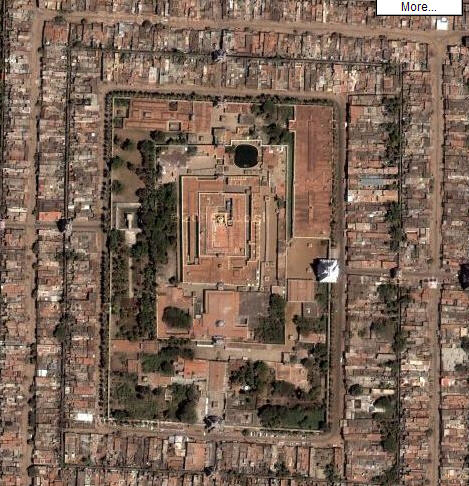
Bird’s Eye View of Srirangam Temple (Courtesy: Google Maps)
Watch Neiveli Santhanagopalan singing this composition:
Here is my translation (of the mOhana section) of the song in Kannada. My Tamizh vocabulary is not in line for this composition of 18th century, and so no wonder I had to take the help of the lyrics and meanings of this song posted on www.karnatik.com to do this translation!
ಏಕೆ ನೀ ಪವಡಿಸಿದೆಯೋ ಶ್ರೀ ರಂಗನಾಥಾ
ಏಕೆ ನೀ ಪವಡಿಸಿಹೆಯೋ? || ಏಕೆ ನೀ ಪವಡಿಸಿಹೆಯೋ? ||
ಅರಳಿದ ಕಮಲದ ಕೊಳದ ಬದಿಯಲಿ
ಹರಿಯುವೆರಡು ಹೊಳೆಯ ನಡುವೆ ||ಏಕೆ ನೀ ಪವಡಿಸಿಹೆಯೋ? ||
ಕೌಶಿಕನ ಆಣತಿಯನಾಲಿಸಿದಕೋ? ಕಡು
ರಾಕ್ಷಸಿಯ ಅಂಬಿನಲಿ ಕೊಂದುದಕೋ?
ಈಶನ ಬಿಲ್ಲನು ಮುರಿದುದಕೋ?
ಪರಶುರಾಮನ ಗರುವವನಳಿಸಿದಕೋ? || ಏಕೆ ನೀ ಪವಡಿಸಿಹೆಯೋ? ||
ಜನಕ ಸುತೆಯೊಡನೆ ಕಾಡುದಾರಿಯ ಸವೆಸಿದಕೋ?
ದೋಷವಿರದ ಗುಹನೊಡನೆ ಗಂಗೆಯ ದಾಟಿದಕೋ?
ಚಿತ್ರಕೂಟ ಮಲೆಯಲಿ ನೆಲೆ ನಿಂದುದಕೋ? ಮಾರು
ವೇಷದ ಮಾರೀಚನ ಬೆನ್ನಟ್ಟಿದುದಕೋ? ||ಏಕೆ ನೀ ಪವಡಿಸಿಹೆಯೋ? ||
ಮಡದಿಯ ಎಲ್ಲೆಡೆಯೂ ಹುಡುಕಿದಕೋ? ಏಳು
ಗಿಡಗಳನೊಂದೇ ಬಾಣದಿ ಬೀಳಿಸಿದುದಕೊ?
ಕಡಲಿಗೆ ಸೇತುವೆ ಕಟ್ಟಿ ದಾಟಿದುದಕೋ? ಲಂಕಾ
ಕೆಡಹಿ ಲಂಕೆಯ ರಾವಣನ ಸದೆಬಡಿದುದಕೋ? || ಏಕೆ ನೀ ಪವಡಿಸಿಹೆಯೋ ||
(The song is about Sri Ranganatha in Srirangam and it could as well apply to Ranagatha at Sriranga pattana – Both temples are located on islands in river Kaveri)
The moment I set up translating ‘En paLLikondeerayya’, I could not help noticing the striking similarity with a song of Purandara Dasa (Birth – 1485 AD).
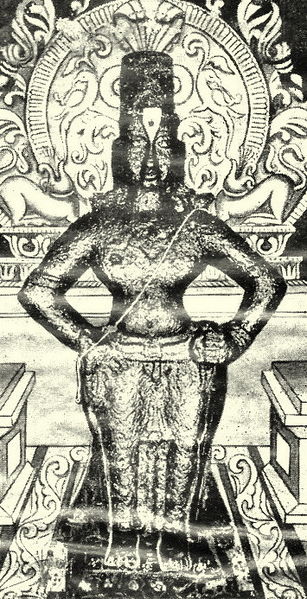
Vitthala of Pandharpur
(Image taken from Wikipedia: http://en.wikipedia.org/wiki/File:Syayambhuvithoba.jpg)
This song ponders on why Vitthala in Pandarapur, on the banks of river Bheema, is left standing with his hands on his waist. He wonders, if it is becuase he is too tired after playing with friends; Or tired running around homes of gopikas to steal butter at their homes or is it due to the fatigue after killing wicked demons. The list goes on.
Listen to Vidyabhushana sing kaTiyalli karaviTTanu:
ಕಟಿಯಲ್ಲಿ ಕರವಿಟ್ಟನೊ ಪಂಢರಿರಾಯ ಕಟಿಯಲ್ಲಿ ಕರವಿಟ್ಟನೊ ||ಪಲ್ಲವಿ||
ಗೊಲ್ಲ ಬಾಲಕರೊಡಗೂಡಿ ತಾ ಬಂದು
ಗೊಲ್ಲತಿಯರ ಮನೆ ಕದ್ದು ಬೆಣ್ಣೆಯ ತಿಂದು
ಬಲ್ಲಿದ ತೃಣಾವರ್ತ ಮೊದಲಾದ ಅಸುರರ
ಮೆಲ್ಲನೆ ಕೊಂದಾಯಾಸದಿಂದಲೋ ?
ಮುದದಿಂದ ವ್ರಜದ ಹದಿನಾರು ಸಾವಿರ
ಸುದತಿಯರಾಳಿದ ಮದದಿಂದಲೊ
ಮದಗಜಗಮನೆಯರ ಮದದಂತಕ ಕೃಷ್ಣ
ಒದಗಿ ಮಾವನ ಕೊಂದ ಆಯಾಸದಿಂದಲೊ?
ರಾಜಸೂಯಯಾಗದಲ್ಲಿ ರಾಜೇಶ್ವರ
ರಾಜರು ಮೊದಲಾದ ಸುರರೆಲ್ಲರು
ಭೋಜನವನು ಮಾಡಿದೆಂಜಲು ಮೊದಲಾದ್ದು
ರಾಜೀವಾಕ್ಷನು ಎತ್ತಿದಾಯಾಸದಿಂದಲೋ ?
ಸುರಪ ತನಯಗೆ ಸಾರಥ್ಯವ ತಾ ಮಾಡಿ
ಭರದಿಂದ ಚಕ್ರವ ಹಿಡಿದುದರಿಂದಲೋ
ಪರಿಪರಿ ವಿಧದಿಂದ ಕುದುರೆಗಳ ತಾ ತೊಳೆದು
ಪರಿಪರಿ ಕೆಲಸದಿಂದಾಯಾಸದಿಂದಲೋ ?
ಪ್ರೇಮದಿಂದಲಿ ಬಂದ ಭಕ್ತರು ತನ್ನ ಚರಣ
ಕಮಲಯುಗ್ಮವ ಮುಟ್ಟಿ ಭಜಿಸುತಿರೆ
ಮಮತೆಯಿಂದಲಿ ಅವರ ಭವವ ಕಳೆವೆನೆಂದು
ಕಮಲನಾಭ ಶ್ರೀ ಪುರಂದರ ವಿಠಲನು ||
While Purandara dasa came in couple of centuries before Arunachala Kavi, here is another song which came in after Arunachala Kavi, but sharing the same theme.
Yes, I am refering to ‘ElAvatAramettitivo’ of Tyagaraja (Birth- 1747 AD). In this composition, Tyagaraja wonders why Rama might have taken an incarnation, and took birth as a human.
Listen to Ariakudi Ramanuja I singing this composition on Music India Online:
Here is my attempt in translating this song to Kannada:
ಏಕೆಂದವತಾರವನೆತ್ತಿದೆಯೋ?
ಏನದು ಕಾರಣವೋ? ರಾಮನೆಂ||ದೇಕವತಾರವನೆತ್ತಿದೆಯೋ?||
ಕಾಳಗವನು ಮಾಡಲಿಕೋ? ಅಯೋಧ್ಯಾ
ಪಾಲನವ ಮಾಡಲಿಕೋ? ರಾಘವ ನೀ ||ನೇತಕವತಾರವನೆತ್ತಿದೆಯೋ?||
ಯೋಗಿಗಳಿಗೆ ಕಾಣಿಸಲಿಕೋ? ಭವ
ರೋಗಗಳ ದೂಡಲಿಕೋ? ಶತ
ರಾಗ ರತ್ನ ಮಾಲಿಕೆಯ ರಚಿಸಿದ ತ್ಯಾಗ
ರಾಜನಿಗೆ ವರವೀಯಲಿಕೋ ನೀ || ನೇತಕವತಾರವನೆತ್ತಿದೆಯೋ?||
These three composers were separated in space, and time – but the commonality of the theme is definitely striking.
This post started off with a song on Ranga, and ended with a song on Rama – making the title quite apt 😉 What do you think?
-neelanjana
No, my sense of time is not warped. Or at least, not yet. I know it is April, and realize Thanksgiving is not until November.But I wanted to thank two people specially, among my online friends today. Hence the title!
Sri Shreekant Mishrikoti, tells me that all the compositions (more than 1200) of Purandara dasa we had in our database are online as of today on Haridasa Sampada. Yippee! It’s been my dream of several years to have all the available compositions of Purandara Dasa online. I had some work on it on Rasikas wiki earlier too. But as all big dreams go, it is not enough just to dream, and it needs the participation of a community to make such dreams a reality. So, even as I thank everyone who has contributed their bit to Haridasa Sampada, my special thanks to to Shreekant Mishrikoti, who has been the most prolific contributor to this project.
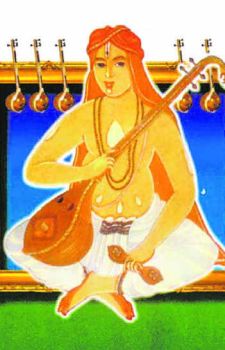
Purandara Dasa
This work would not have been completed in such a short span of time if we did not have an e-text to start with. Even though we typed in a number of compositions afresh, a large number of the 1200+ compositions came in from the e-text provided by Sri Lakshman Ragde of Toronto. We had to go through each composition, and fix the typos etc, but having something to start on was indeed great.
All dasa sAhitya lovers are indebted to Sri Lakshman. What else can I say? Lakshmanam namaami rasikapriyam, once again!
Right now, Haridasa Sampada is a all-kannada site. But hold on! We have plans of making it easy to those who can not read kannaDa to be able to search the composition database on Haridasa Sampada, and render the text in their favorite script – roman or other scripts that supports unicode :). I will surely provide details as and when new features are available.
Our aim is to make Haridasa Sampada a very comprehensive site about Haridasa Literature.After completing the work on Purandara Dasa, we will move on to other haridAsas.
Please help spread the word about Haridasa Sampada.
-neelanjana
Of late, I have seen a surge of traffic to my blog. People are visiting my blog from all corners of the world. Now don’t ask me how come there are corners in a world which is a spherical!
This increase in hits is in spite of the fact that I not writing so often. I was perplexed with this influx of traffic. If you think the quality of my writing has improved, then I would not stop you from thinking so. At least I would like to think so too 😉 If I don’t make assumptions favorable to myself, who else will?
My parents have always said: Everything in this life, good or bad, is due to ‘God’s grace’. Old habits die hard – So now I say that the blog hits are just plain ‘God’s grace’ too.
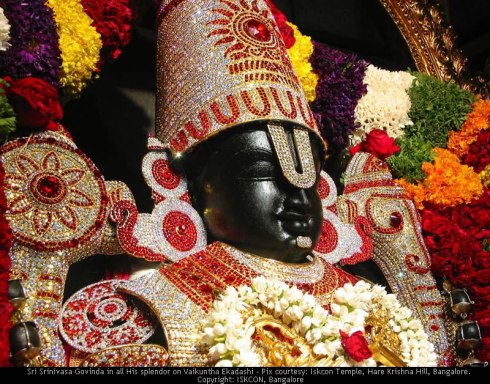
Do you find hard to believe it? But wait till I provide you with documentary evidence! I noticed that this traffic increase started once I wrote a post about Tirupati Timmappa last month.
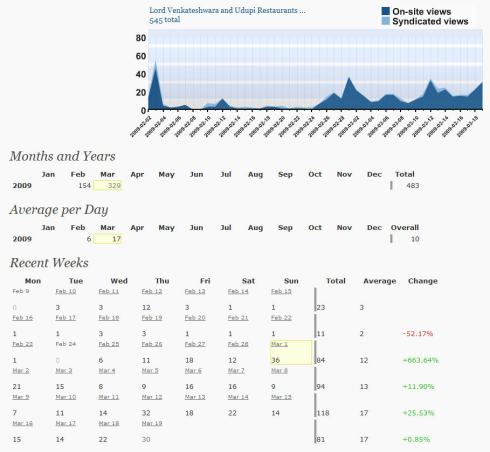
This single post “Lord Venkateshwara and Udupi Restaurants” attracted lots of hits in the last month. You might ask what is so special about this post. Didn’t you notice the name of ‘Lord Venkateshwara‘? I wonder if that was the reason why Purandara dasa said “ಸ್ಮರಣೆ ಒಂದೇ ಸಾಲದೆ? ಗೋವಿಂದನ ನಾಮ ಒಂದೇ ಸಾಲದೇ?” (smaraNe onde sAlade? gOvindana nAma onde sAlade?)- Isn’t just remembering not enough? Isn’t merely reciting Govinda’s name not enough?
But then, I am reminded so many other posts of mine, which don’t seem to get so many visitors – Why is the Almighty not showering his blessings on those poor posts of mine? And some of those also carry his name, if I remember correctly!
May be it is time to do some more ‘nAma smaraNe’ to solve this puzzle – No. Not the names you are thinking. A more contemporary one. One and the only big brother. GOOGLE.
This is the next table I see in the blog stats. Almost every hit on “Tirupati Venkateshwara and Udupi Restaurants” has come from a Google search for an image of Lord Venkateshwara 🙂
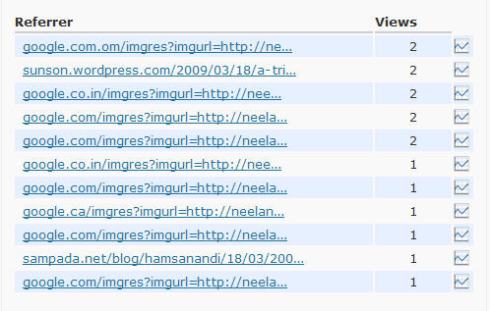
Now, I am sure you would agree it is indeed God’s Grace :). I would leave it you to decide which one!
-neelanjana
Today is February 13th, Friday. Ever since Jesus was crucified, the poor Friday, and the number 13 have been become associated with misfortune. Jesus had 12 of his disciples with him on his last supper (that makes it 13 at the table) and the day he was put on the cross was a Friday. So Friday the 13th is seen as an indication of evil by many believers.
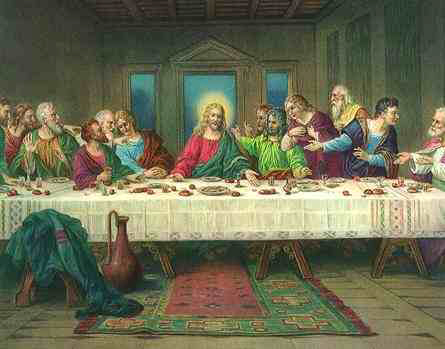
Anyway, I do not fall into the category of those who are worried about what might happen on Friday the 13th. I wonder if there are people who are already associating last nights’ plane crash at Buffalo as one of the Friday the 13th effect.
In many of these beliefs, it is the human psych that is at work. If you are worried that something would go wrong, there is probably a good chance that your mind is somewhere else worrying, rather than concentrating on what you are supposed to be doing. Right? In that case, probably you would end up making more mistakes than you normally would, and perhaps the outcome would not be what was desired.
For those who are worried about Friday the 13th, I prescribe this dose of Purandara Dasa:

This is a small composition (ugaabhoga):
ಇಂದಿನ ದಿನವೇ ಶುಭದಿನವು
ಇಂದಿನ ವಾರ ಶುಭವಾರ
ಇಂದಿನ ತಾರೆ ಶುಭತಾರೆ
ಇಂದಿನ ಯೋಗ ಶುಭಯೋಗ
ಇಂದಿನ ಕರಣ ಶುಭ ಕರಣ
ಇಂದು ಪುರಂದರ ವಿಟ್ಠಲ ರಾಯನ
ಸಂದರ್ಶನ ಫಲವೆಮಗಾಯಿತು!
इंदिन दिनवे शुभदिनवु
इंदिन वार शुभवार
इंदिन तारॆ शुभतारॆ
इंदिन योग शुभयोग
इंदिन करण शुभ करण
इंदु पुरंदर विट्ठल रायन
संदर्शन फलवॆमगायितु!
Today is an auspicious day;
Today is the best day of the week;
Today’s star is a good star;
Today’s yoga is good;
Today’s karaNa is good too.
Now that I have seen the
Good Lord Purandara Vitthala,
Today, indeed is a very good day!
Purandara Dasa was a Haridasa. His ultimate aim was to have a darshana of his Lord. We are mere mortals, may not be so blessed.
But, I am sure if we just do what are supposed to do with right spirit and effort, I have no doubt this would be a good day as any other day could be.
-neelnajana
(Pictures from Google images)



ಇತ್ತೀಚಿನ ಟಿಪ್ಪಣಿಗಳು